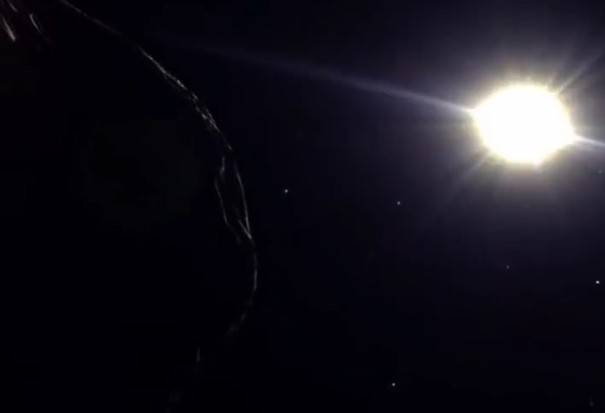Ένας αστεροειδής που ανακαλύφθηκε πρόσφατα και έλαβε την ονομασία «2023 DZ2» θα περάσει το Σάββατο σε μικρή απόσταση από τη Γη.
Σύμφωνα με το Γραφείο Συντονισμού Πλανητικής Άμυνας της αμερικανικής διαστημικής υπηρεσίας (NASA), ο αστεροειδής έχει διάμετρο περίπου 55 μέτρων, κινείται με ταχύτητα 37 χλμ/δευτερόλεπτο και αναμένεται να πλησιάσει τη Γη σε απόσταση 160.000 χιλιομέτρων.
Παρότι τέτοια φαινόμενα δεν είναι σπάνια, η προσέγγιση ενός αστεροειδούς αυτού του μεγέθους συμβαίνει μια φορά κάθε δεκαετία, υπογραμμίζει η NASA.
Η αμερικανική διαστημική υπηρεσία επισημαίνει ότι το Διεθνές Δίκτυο Προειδοποίησης για Αστεροειδείς θα έχει την ευκαιρία να αναλύσει τα δεδομένα από την προσέγγιση του «2023 DZ2» για να βελτιώσει το πρόγραμμα πλανητικής άμυνας με σκοπό την αντιμετώπιση ενδεχόμενης απειλής στο μέλλον.
This newly discovered asteroid will pass inside the Moon’s orbit.
On 25 March 2023, the near-Earth asteroid 2023 DZ2 will have a very close, but safe, encounter with Earth. It will pass at a distance of less than half the Moon.
Video, Part 1️⃣ pic.twitter.com/jWasW27nFf
— 𝕃𝕦𝕚𝕤 𝔸𝕝𝕗𝕣𝕖𝕕𝕠⁷ ∞∃⊍ ≈ ᑕOՏᗰIᑕ ᗰᗴՏՏᗴᑎᘜᗴᖇ (@LuisADomDaly) March 22, 2023
Newly-discovered asteroid 2023 DZ2 will pass less than half the Moon’s distance on March 25. Dozens of meters wide, it will get as bright as magnitude 9.7, putting it in the range of binoculars. It currently has a 1/550 chance of impacting Earth 3 years later in 2026. #2023DZ2 pic.twitter.com/y7vrp5coFw
— Tony Dunn (@tony873004) March 17, 2023
Newly discovered asteroid #2023DZ2 (diameter ~70 meters) will have a close encounter with Earth on March 25 at 19:52 UTC, flying at about 0.452 LD (lunar distances) or about 173,000 km
[orbit, data: https://t.co/vZyU56RHSs] pic.twitter.com/LU0wLQ9Kr6
— Massimo (@Rainmaker1973) March 19, 2023
On Saturday, a 40-100 meter #asteroid will fly by Earth at less than half the distance of the Moon🌙#2023DZ2 was discovered ~3 weeks ago. At first, it showed a small risk of #EarthImpact in 2026 but further observations have ruled this out 🪨🧵👇#CloseApproach#SpaceSafety pic.twitter.com/tCLBaTe0f4
— ESA Operations (@esaoperations) March 21, 2023


